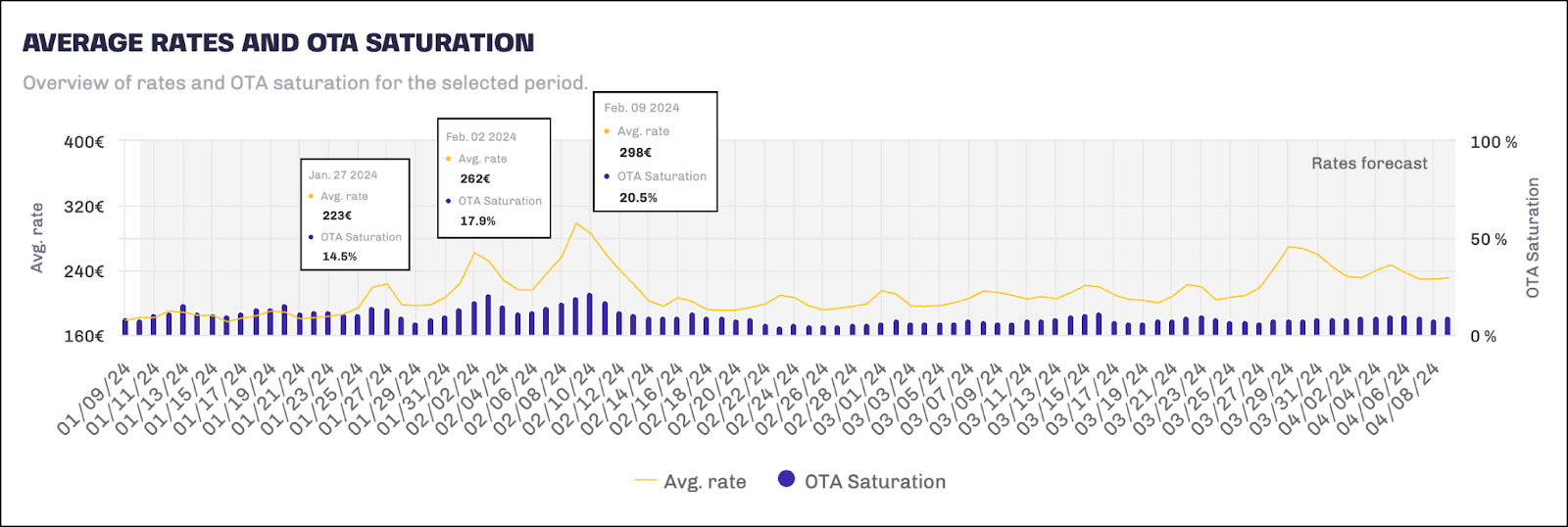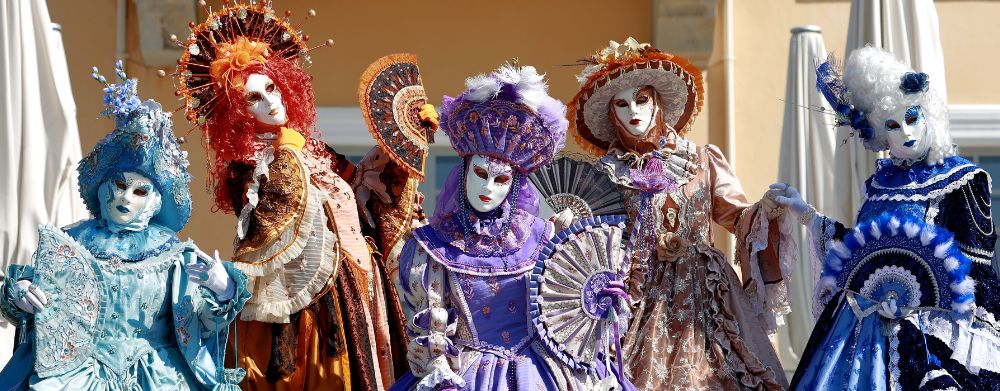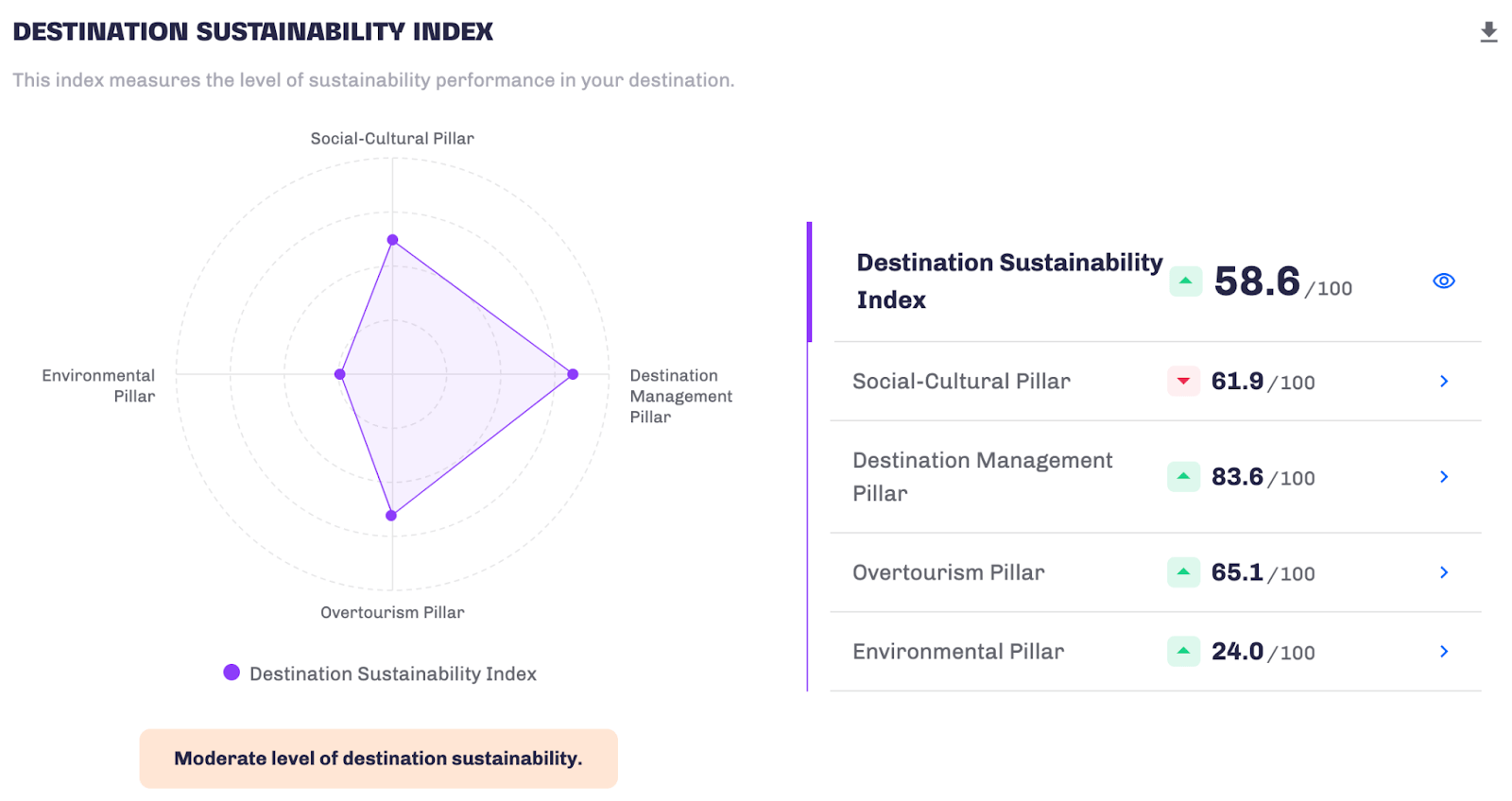The Carnival of Venice is renowned worldwide, sharing the spotlight with Rio de Janeiro as the most celebrated carnivals.
While the festival greatly benefits local tourism financially and in terms of visibility, the city is proactively addressing sustainability issues to minimise its ecological footprint.
The Data Appeal Company used the D / AI Destinations platform to study the real economic and social impact of the Venice Carnival behind the scenes.
What were the main findings?
- Average accommodation rates on OTAs during Carnival are 40% higher than in 2023 and up to 57% higher than the average for the first three months of 2024.
Short-term rentals exhibit the highest rate increase at +47% compared to the previous year. - Rate peaks are observed during all three Carnival weekends (27-28 January; 3-4 February; 10-11 February).
- The third weekend of 10-11 February shows the highest OTA saturation and rates, with average hotel rates at €427 and short-term rental rates at €298, and a saturation rate of around 30%.
- Bookings on online portals have been slow, indicating a shift towards last-minute and direct channel bookings.

Visitors from 140 countries at the Venice Carnival
The Carnival is a celebration that captures the interest of not only residents and Italians but also foreigners.
In 2023, the Carnival achieved remarkable national figures, showcasing a robust recovery from the pandemic era. CNA Turismo e Commercio reported a staggering 5 million tourists, among which two million chose to stay in destination cities, with Venice, Milan, and Viareggio emerging as popular choices. Approximately half a million visitors arrived from other countries, contributing to revenues of around three billion.
Affirming this positive trend, data from Venice’s Smart Control Room in 2023 disclosed that over 140 nationalities partook in the Carnival festivities in the Venetian capital. Notably, one in every five foreign attendees was French, 12% were English, 11% were Spanish, and 11% were German.
This year, travellers landing at Venice’s Marco Polo Airport between late January and mid-February hail from the Americas (16%), Japan (9%), France (8%), and England (7%)—according to GDS Travelport flight information on D/AI Destinations.
Hotel and short-term rental prices skyrocket, experiencing a 40% increase compared to 2023
Over the upcoming three months, there is a noticeable uptick in fares within the historic centre of Venice, particularly during weekends, with a notable peak during the Easter weekend.
However, the most significant fluctuations are evident during the three Carnival weekends spanning from January 27 to February 13.
- The average cost of a double room can increase up to 57%, compared to the average of the three months under consideration.
- The first Carnival weekend, featuring the famous Flight of the Angel on Sunday the 28th, records an almost 30% saturation on OTAs, with a general price increase of 4% and a 7% increase for short-term rentals on Saturday the 27th.
- In the second weekend, the rate increase reaches 35% for Saturday the 3rd, with a saturation around 25%.
- The third weekend presents the most significant increase in average rates, peaking at +57% in the hotel sector. Saturation approaches 30%.

(Average rate trends and OTA saturation in the hospitality sector – source: D/AI Destinations)
The significant increase in rates is undoubtedly linked to the rise in prices of raw materials and suppliers in 2023, which led to many hoteliers to adjust their prices since the summer. There’s also a strong demand, particularly from international visitors, who historically exhibit a lower price sensitivity compared to domestic tourists.
When comparing the rates during the Carnival period to those of the previous year, there is a noticeable 40% increase.
Short-term rentals experience the most substantial tariff hike. Over the next three months, the average rate reaches €209, marking a 32% increase compared to the previous period. During the Carnival weeks, the rate peaks at €232, reflecting a 47% surge compared to 2023.

(Average rate trends and OTA saturation in the short-term rental sector – source: D / AI Destinations)
The increase is undoubtedly attributed, once again, to demand and the commissions imposed by Airbnb, which have reached rates as high as 15%.
However, there’s more to it: the significant spikes in accommodation rates over the last two years result from a shift in the destination of many private properties. These properties, which were previously leased to students with regular contracts, are now exclusively dedicated to tourist use, with rates sometimes surpassing those of hotels.
According to a survey by Corriere della Sera, Venice maintains its status as the most expensive city for short-term rentals, reporting average rates of €212 per night, as indicated by D/AI Destinations, marking a 50% increase from 2019.
The current saturation of hotels and short-stay accommodations on OTAs stands at 25-30%. However, to paint a complete picture, it’s important to consider that during peak seasons, many establishments prioritise the direct booking channel. Additionally, Italians tend to book closer to the dates of their stay. Therefore, it remains highly likely that as the end of the month approaches, we may experience a sell-out, similar to the trend observed in 2023.

Sustainability and quality of life: The prevailing trend in 2024 is the dispersed carnival
In recent years, Venice has come to symbolise the dangers of overtourism, characterised by overcrowding in the historic centre due to tourism.
According to the Destination Sustainability Index, a proprietary index by The Data Appeal Company evaluating the sustainability of tourist destinations comprehensively, Venice scored 58/100 in January 2023.
Specifically, the overtourism pillar, a sub-index gauging the impact of tourism pressure on residents’ quality of life, scored 65/100.
This figure indicates a reasonably sustainable management of tourist flows, reflecting the efforts of institutions to address the challenges in the area. However, there is still room for improvement.

The Carnival represents one of the periods most susceptible to overtourism in Venice. However, the city has implemented measures over the past few years that have significantly mitigated these challenges.
In 2020, amid the pandemic, Venice introduced a system of cameras and sensors on the city’s outskirts to proactively manage influxes and monitor movements in the area. This included tracking the number of travellers in the city and the central squares (source: Sole 24 Ore).
In 2023, Venice opted to invest in a widespread and ‘quantitatively sustainable’ Carnival model. This approach aims to ensure both enhanced health safety and a more enjoyable experience for both tourists and residents during the festivities.
The 1,100 performances, featuring acrobats, clowns, and street artists, with the participation of 62 companies and a total of 153 performers each day, were dispersed across all parts of the city, including less central areas.
This approach aimed to distribute the audience, eliminating the need for barriers, roadblocks, and closures that can inconvenience the city’s residents.
This organisational strategy had no adverse impact on the event or its appeal to tourists, as the budgets for 2023 reflected a highly positive outcome.
For this reason, the same format of a dispersed Carnival will be reintroduced in 2024. Venice Mayor Luigi Brugnaro expressed, “We want it to be a Carnival that respects the city, those who live and work there.”
Would you like your destination to be both sustainable and competitive?
The Veneto Region has embraced the user-friendly and comprehensive D/AI Destinations destination management platform to exercise complete control over its tourism, elevate its performance, and measure the sustainability of each specific area.





